

After long calls, the East Building of the Shanghai Museum, which has attracted much attention, has finally been unveiled.
The Shanghai Museum, which has been in existence for more than 70 years, ushered in an important historical moment on the morning of February 2, 2024: starting from the laying of the first pile foundation for the East Building of the Shanghai Museum in Pudong on September 27, 2017, it took more than six years of construction , by February 2, 2024, it was finally completed and officially opened. The East Pavilion of Shanghai Bozhou has a total construction area of 113,200 square meters and an exhibition area of approximately 33,600 square meters. It will be opened in three steps within 2024: starting today, The Bronze Exhibition Hall of the East Pavilion of the Shanghai Botanical Garden will be the first to be opened on a trial basis, and the special exhibition "Stars in China - Sanxingdui·Jinsha Ancient Shu Civilization Exhibition" will be launched simultaneously. Before the end of June, the open area of the East Pavilion will reach 80% of the exhibition space. By the end of November Recently, the Shanghai Bodong Pavilion was fully opened.
Before the trial opening of the Shanghai Bo East Building, Shanghai Museum Director Chu Xiaobo accepted an exclusive interview with The Paper, explaining in detail the Shanghai Museum’s latest positioning, exhibition displays and future ideas:
"The East Pavilion of Shanghai Bohai Sea will use a unique panoramic layout in the world to better describe the profound Chinese cultural context and make the exhibition popular." Chu Xiaobo said, "After the opening of the East Pavilion, what is the positioning of the People's Square Pavilion? , this is a question we have been thinking about. Among the more than 6,000 museums across the country, so far there is no venue that can truly display world civilization and art on a regular basis. In a very international city like Shanghai, can we use Shanghai The geographical advantage of the museum’s People’s Square has made the People’s Square Museum the first important place in China that can regularly display world civilization and art.”
"Today's museums are very busy. In the newly announced exhibition plan for 2024, Shanghai Expo will launch an unprecedented 18 special exhibitions, so I say that this year is the Year of the Dragon, and Shanghai Expo will blow up a 'tornado'."
"The Shanghai Museum is positioned as the world's top museum of ancient Chinese art. In fact, when Shanghai Museum was founded in 1952, Shanghai Museum was positioned as an art museum. For Shanghai Museum, there is no way for us to develop modern and contemporary art collections in the future. question."

Overhead view of Shanghai Museum East Building
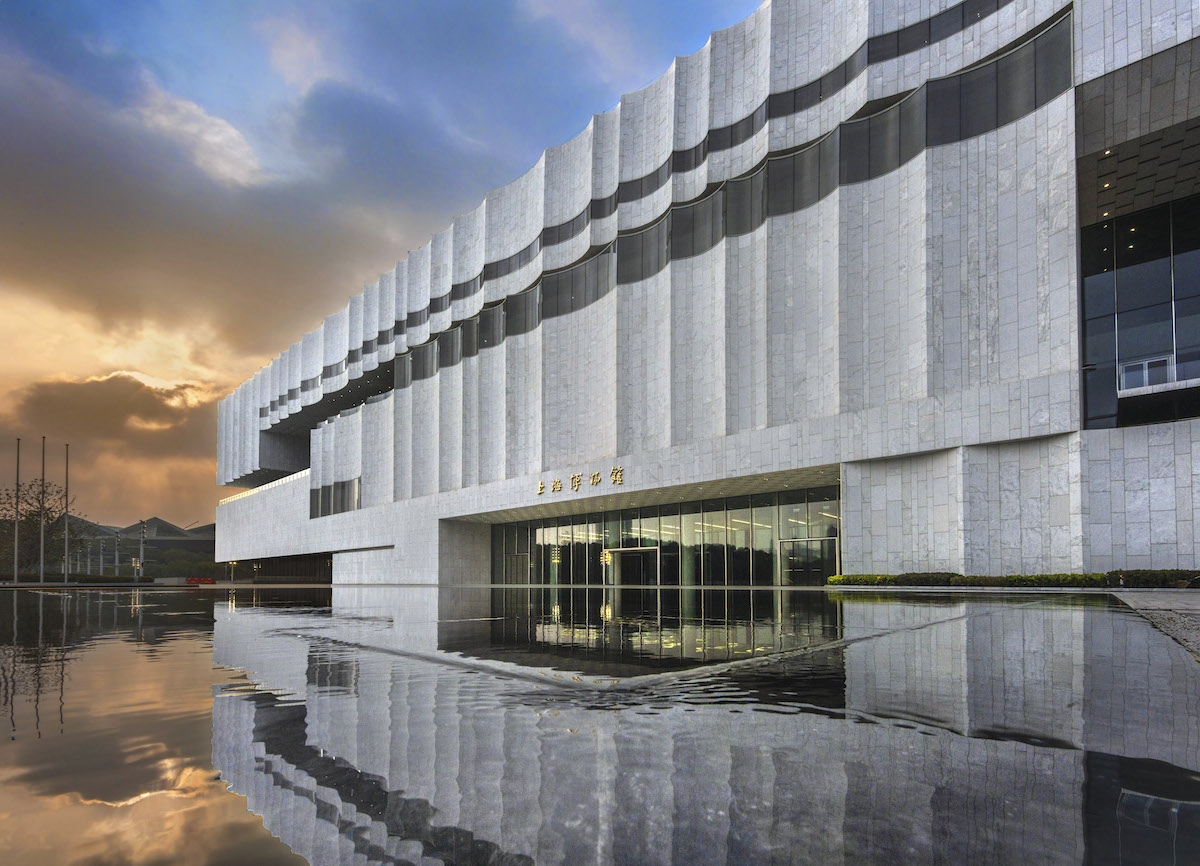
Shanghai Museum East Building
“Shanghai is an inexhaustible cultural treasure house”
The Paper: Let’s start with you personally. It has been a year and a half since you started working at Shanghai Bo, please talk about your changes in mentality. How do you understand the Shanghai Museum of the past and the Shanghai Museum of the future?
Chu Xiaobo: I have been working in the Shanghai government department before, in charge of cultural relic protection and museum construction in Shanghai. After coming to Shanghai Expo, my feelings are completely different, because the Shanghai Museum is named after the city of Shanghai. The temperament of Shanghai Expo is very consistent with the spiritual character of Shanghai. Shanghai "accommodates all rivers and pursues excellence." The urban spirit of "open-minded, wise, generous and modest" and the urban character of "openness, innovation and inclusiveness" can find many points of convergence in the Shanghai Museum. Some experts have pointed out that Shanghai's urban spirit of "accommodating all rivers" existed in this area as early as the Song and Yuan Dynasties. As far as the field of art is concerned, in the Yuan Dynasty, especially the Ming Dynasty, many art masters at that time gathered here. In this area of Shanghai, four painters like Huang Gongwang of the Yuan Dynasty lived in Songjiang, including the Songjiang School of Painting represented by Songjiang Dong Qichang. Many artists formed their artistic styles in Shanghai.

Chu Xiaobo (second from right) at the “Conversation with Leonardo da Vinci” exhibition
The Shanghai Museum has a rich collection. When I served as the curator of the Shanghai Museum, I felt that it was an inexhaustible cultural treasure house that allowed me to learn a lot. Another pressure on me was the fear of knowledge accumulation. The Shanghai Museum has a collection of more than one million cultural relics. Currently, there are more than 33 categories of cultural relics. It is the museum with the most complete categories of ancient Chinese art in the world. This is also the cultural wealth accumulated by the Shanghai Museum through more than 70 years of hard work. Facing the With such a huge collection system, how to activate these cultural relics resources in the future, make the cultural relics come alive, better play the educational role of cultural relics, and maximize their value? There is a lot of work to be done here. As the curator, I deeply understand Feeling of great responsibility. For more than a year and a half, I am deeply proud to work at Shangbo. For my own personal development, it is also the luckiest stage in my life. The "Big Museum Plan" launched by the Shanghai Museum has a lot of room for the future, both in terms of hardware construction and improvement of soft power. It is also a grand blueprint that all employees of the Shanghai Museum need to draw together. The key now is how to realize these ambitious goals through the efforts of generations of Shangbo people. It should be said that the future is long, but I also firmly believe that we have encountered a very good era. How to shoulder the responsibilities in the new era? A new cultural mission? To sum it up in three sentences, the first is to promote the excellent traditional culture of China, which is also the biggest resource advantage of the Shanghai Museum. We have so many cultural relics collections, and we must promote them well; the second is to promote high-quality development. We have gone through seven years of After more than ten years of hard work and accumulation, many of our working methods in the future must break the rules and promote high-quality development; third, we must build Shanghai into a city cultural landmark with world-renowned reputation. This is the next important step for our Shanghai Museum. New cultural mission.
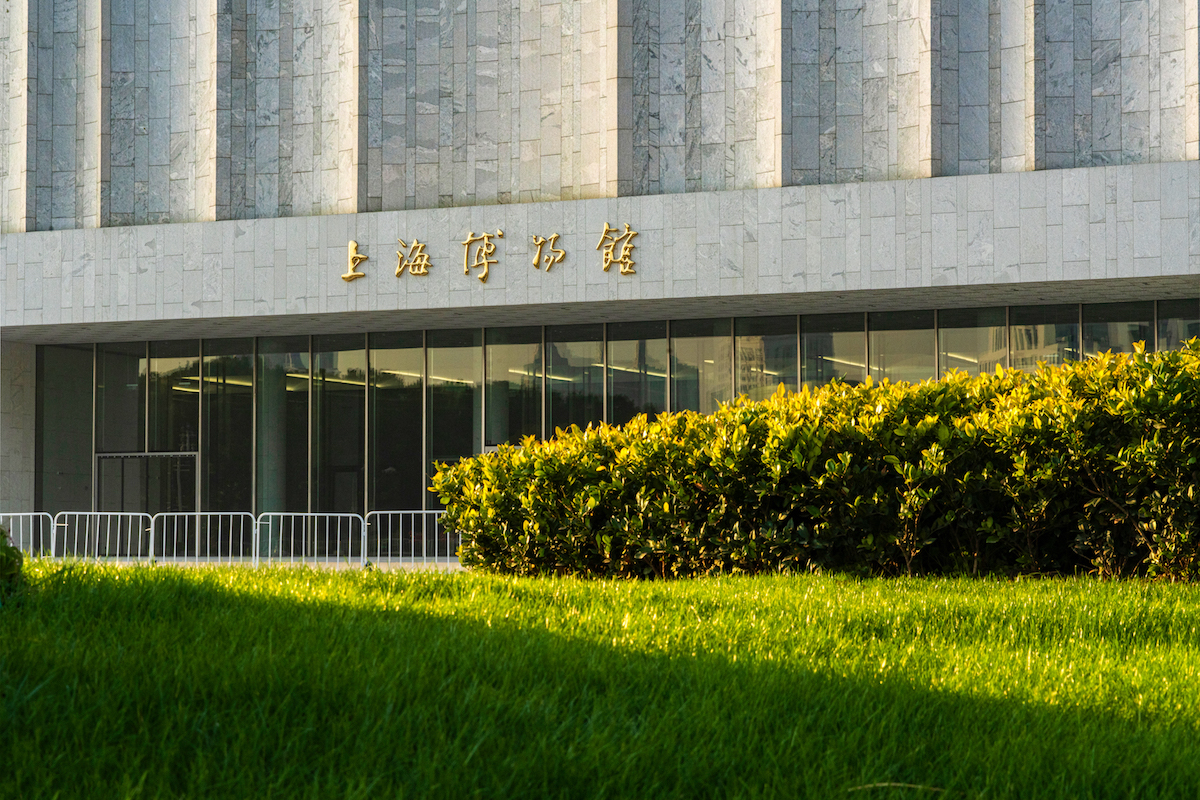
Shanghai Museum East Building

Interior of Shanghai Museum East Building
As the director of the Shanghai Museum, there are really many things to do. I believe that with the support of the Shanghai Municipal Party Committee and Government, we Shanghai Museum people will strive to maximize the functions of the museum through hard work.
The Paper: Shanghai Bo has its own context and spirit. Where do you think the most important spirit and tradition of Shanghai Bo are reflected? How do you understand the foundation, context, and inheritance of the Shanghai Museum?
Chu Xiaobo: I think that after more than 70 years of development and accumulation, the Shanghai Museum has shown a lot of Shanghai Museum spirit. The first is to benchmark against world-class excellence and pursue excellence, which is the long-term pursuit of SBO people. There are countless museums in the world, and the number of museums in China has reached more than 6,500. How to exert influence and appeal among many museums means that we must have very high pursuits, and this requires us to first start with our work Start with the basics. There are two basic cores of the work of the museum, collections and research. The so-called solid foundation is the collection, and the "foundation" is research. In these two aspects, we have the goal of benchmarking against world-class standards. I believe that the above Bo can definitely be unique.
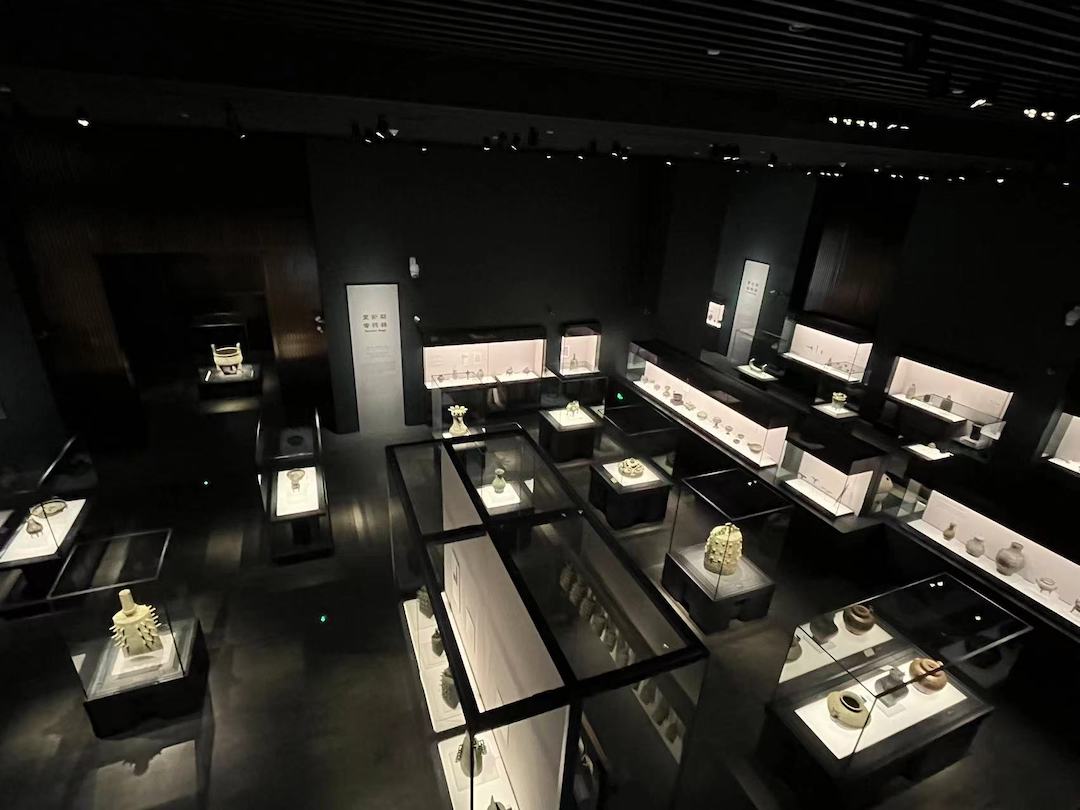
Shanghai Museum East Building Bronze Hall

Exhibition of the Ancient Chinese Ceramics Hall in the People’s Square Hall of the Shanghai Museum
If a museum does not have collections, it cannot be called a museum. It may be an exhibition hall. If there is no research, there will be no cultural voice, and this museum will be nothing more than a warehouse of cultural relics. For more than seventy years, Shangbo people have spent great efforts in collecting and researching. Why do we have a collection of more than one million cultural relics, which is one of the few in China and even the world? And during the process of collecting cultural relics, we consciously collect collections of various categories; Shanghai Expo also attaches great importance to academic research , talent cultivation, and has always emphasized the establishment of academic museums. Over the years, it has cultivated well-known experts in many fields in the museum industry.
Of course, we still have the spirit of unity and collaboration, and we may be able to do it alone in many fields, but the museum is a unit that requires teamwork to promote development. The Shanghai Museum has many business departments and many comprehensive management departments, and everything needs to be done Everyone works together and promotes it together, so the cohesion of our Shanghai Museum is particularly strong. This is also our tradition for many years.
After I came to SIBO, I communicated my ideas with my colleagues in the library and reached a consensus. Only by working together and working towards a common goal can we accomplish many great things. For example, every time we hold an exhibition, which involves cross-departmental cooperation between multiple departments, we must first have a curator to formulate the curatorial ideas, and then start to select relevant cultural relics. In addition to the Shanghai Expo, we also need to mobilize the resources of museums around the world. It requires a lot of manpower to communicate and work hard. Nowadays, it is very difficult to borrow cultural relics for exhibitions. They are scarce resources that everyone is competing for. Each exhibition requires hard work from the Shanghai Bo people.

Exhibition scene of "Star Shining in China - Sanxingdui·Jinsha Ancient Shu Civilization Exhibition" in Shanghai Bo East Pavilion
For example, the "Star of China - Sanxingdui·Jinsha Ancient Shu Civilization Exhibition" will be launched soon to coincide with the opening of the East Hall. This exhibition has gone through ups and downs from the beginning of preparations to the opening of the exhibition, including the loan of cultural relics. difficult. The Sanxingdui site has become a hot topic around the world because of the many new archaeological discoveries in recent years. There are many museums that borrow cultural relics from merchants, which also makes it more difficult for us to hold exhibitions.

Exhibition scene of "Star Shining in China - Sanxingdui·Jinsha Ancient Shu Civilization Exhibition" in Shanghai Bo East Pavilion
The Paper: I heard that you made five trips to Sichuan alone for the Sanxingdui special exhibition, right?
Chu Xiaobo: Yes, the leader in charge and I went to Sichuan specifically. We flew five times together. There are more than 360 cultural relics on display this time, and the borrowed cultural relics involve 11 provinces, municipalities, and autonomous regions across the country, and about 25 prefecture-level cities. We traveled 16,000 kilometers just to bring these cultural relics to Shanghai. The birth of a high-quality exhibition requires not only heavy cultural relics but also good display design to attract audiences. In addition, each of our exhibitions will have many supporting facilities, such as cultural and creative products, educational activities, etc. Therefore, our so-called "phenomenal exhibition" is definitely not something that can be done by one department, let alone one individual. It requires the entire museum. Work together from top to bottom.
Turn the cultural relics and archeology exhibition into a "series"
The Paper: Speaking of exhibitions, exhibition planning is one of the key points of the museum and a carrier of direct dialogue with the audience. You previously proposed that the Shanghai Bodong Museum will use a unique panoramic layout in the world to better tell the profound stories. The Chinese cultural context makes exhibitions popular. In fact, every exhibition at Shanghai Expo can be said to be popular, from the sensational "National Gallery Collection Exhibition" to "Why China" - Songze·Liangzhu Civilization Archeology Special Exhibition to the "Conversation with Leonardo" exhibition currently being held. The planning context of the two major exhibition brands of the Shanghai Museum, the "Dialogue with the World" cultural relics and art exhibition series and the "Why China" cultural relics and archaeological exhibition series, has become increasingly clear. Judging from the exhibition projects that have been launched so far, are these two major exhibition series being promoted according to your original ideas? What are the subsequent exhibition plans?
Chu Xiaobo: After the Shanghai Museum launched the "Big Museum Plan", it focused on three major exhibition brands. One of them is the "100 Objects Seeing China" cultural relics and art overseas exhibition series focusing on Chinese culture going abroad, and the other two are held at the Shanghai Museum. , one is the "Why China" cultural relics and archeology exhibition series, and the other is the "Dialogue with the World" cultural relics and art exhibition series. Why did these two series of ideas come about? At first we did not realize that we needed to build a brand. As the planning deepened, we discovered that our Chinese Civilization Discovery Project has produced many latest results. There are very important new archaeological discoveries every year. These are very important and can be exhibited. resource. Because planning exhibitions requires constantly coming up with new content or new curatorial concepts, you can’t always just cook the old stuff. Therefore, during the planning process of "Zhaizi China - Henan Xia, Shang and Zhou Dynasty Civilization Exhibition", we felt that focusing on the exploration of the origins of Chinese civilization is a very important topic, and we believe that the content of this topic allows us to do it for at least ten years. The above is especially based on the overall pattern of Chinese civilization with stars in the sky and diversity and unity. Therefore, we first had "Zhai Zhong Zhong", and then upgraded it to the "Why China" cultural relics and archaeological exhibition series.

"Owl Zun" at the exhibition site of "Zhaizi China - Henan Xia, Shang and Zhou Dynasty Civilization Exhibition"
Based on this top-level design, after the opening of "Zhaizi China - Henan Xia, Shang and Zhou Dynasty Civilization Exhibition", we have been thinking about the next theme. After discussion, we believe that the first exhibition focuses on the civilization of the Yellow River Basin, and the second exhibition should return to the Yangtze River Basin. The Yangtze and Yellow Rivers are both important birthplaces of Chinese civilization, so our second exhibition is called "Empirical China - Songze·Liangzhu" "Special Exhibition on Civilization Archeology". After these two exhibitions were held, we found that the "Why China" brand has been deeply rooted in the hearts of the people. The audience followed "Why China 1" and "Why China 2" like a TV series, and they are also looking forward to "Why China" 3" is what. Therefore, after the "Empirical China" was held last year, we have been closely preparing for the third exhibition "Shining China - Sanxingdui·Jinsha Ancient Shu Civilization Exhibition", focusing on the upper reaches of the Yangtze River and telling the story of the ancient Shu civilization. In fact, the "Sanxingdui Exhibition" has not officially opened yet, and our "Why China 4" is already being planned. The Shanghai Museum will launch at least one "Why China" series of exhibitions every year, and we are confident that we will continue to do so.
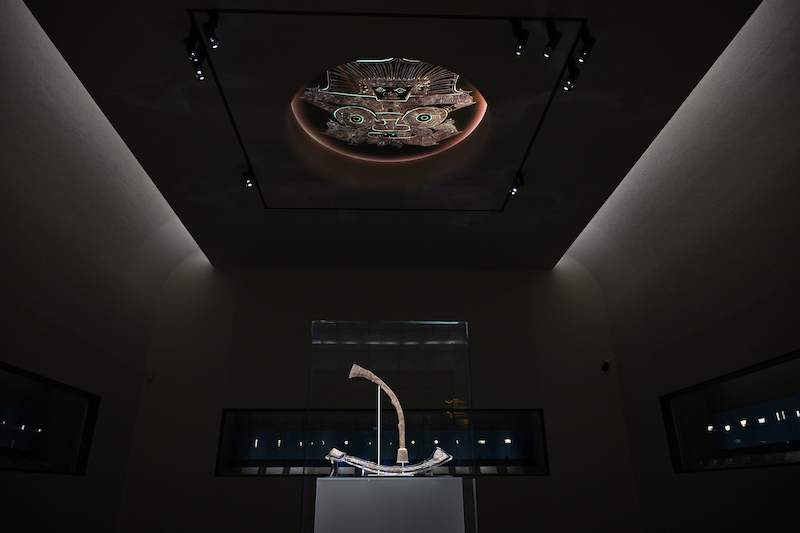
"Empirical China: Songze·Liangzhu Civilization Archeology Special Exhibition" exhibition site
The "Dialogue with the World" series has now been held for three phases. The first phase was the "Integration of East and West - China-Europe Ceramics and Cultural Exchange Special Exhibition" held during the epidemic. When this exhibition was held, it had not yet been classified into the "Dialogue with the World" series. However, during the exhibition process, we felt that the Shanghai Museum has long been closely connected with many museums at home and abroad. Shanghai Museum has also held many exhibitions in its history. Major exhibitions in cooperation with global institutions should form a series of brands that focus on cultural exchanges between the East and the West and highlight the global resource allocation capabilities of the Shanghai Museum. Therefore, the "Integration of East and West - Special Exhibition on China-Europe Ceramics and Cultural Exchanges" was included in the " The first issue of the "Dialogue with the World" series, because it really connects the cultural exchanges between the East and the West through porcelain. The second issue is "From Botticelli to Van Gogh - Collection Exhibition of the British National Gallery" held last year. This exhibition was very successful. Thanks to the right time, place and people, this exhibition finally became a "Phenomenal Exhibition".
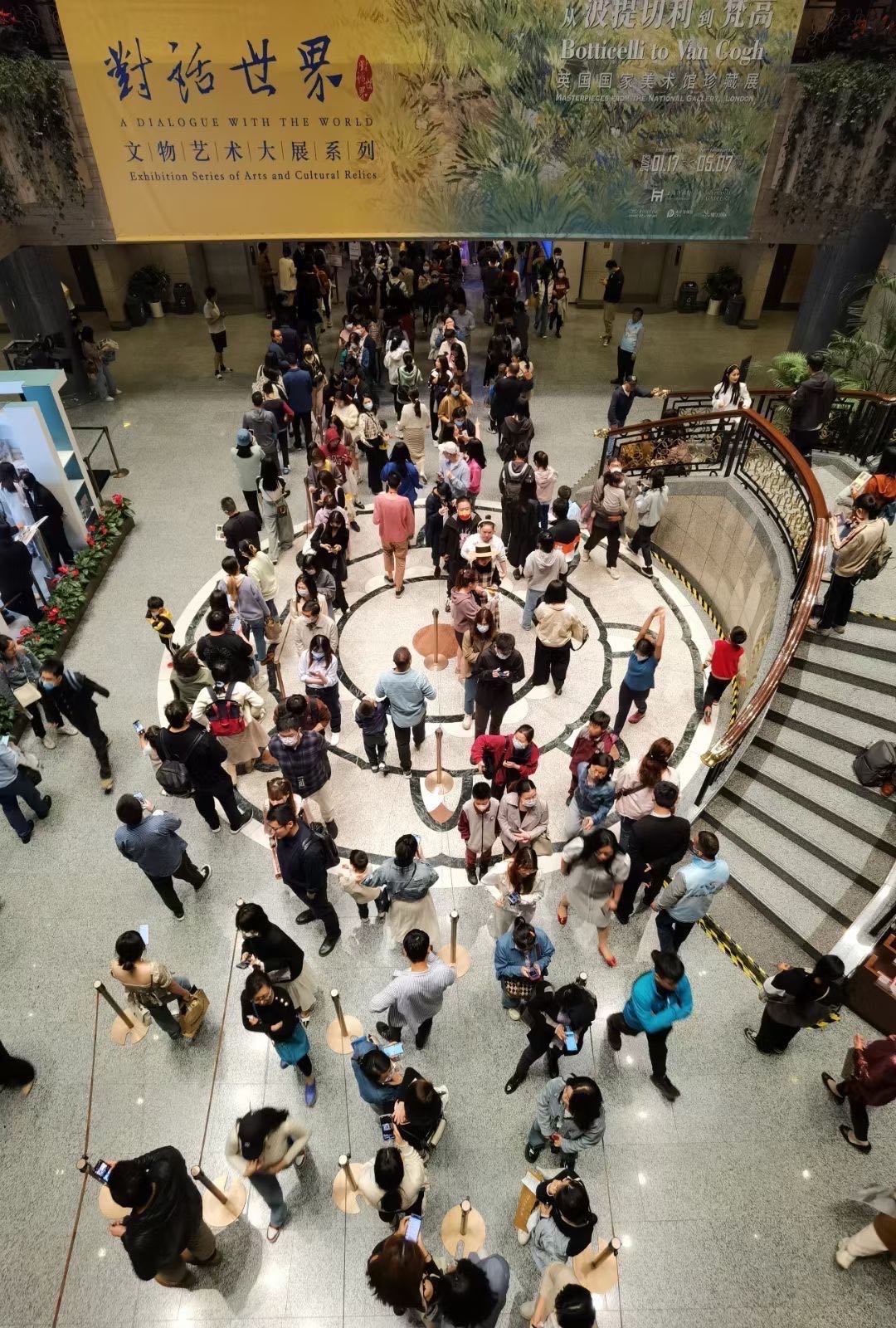
"National Gallery Collection Exhibition" exhibition scene

"National Gallery Collection Exhibition" exhibition scene
After this exhibition became a "hit", we calmly analyzed it and found that the exhibition was very successful, but we also felt a lot of regrets because all the exhibits in this exhibition came from the National Gallery of England, and it tells the story of the 400 years of Western painting. Years of history, what we regret is the lack of cultural exchange dialogue. For the Shanghai Museum, we cannot just simply introduce exhibitions. Although this is a common practice in most museums now, from the perspective of the long-term development of the Shanghai Museum, we hope to highlight our international cultural voice, so we need to carry out such activities. kind of conversation.
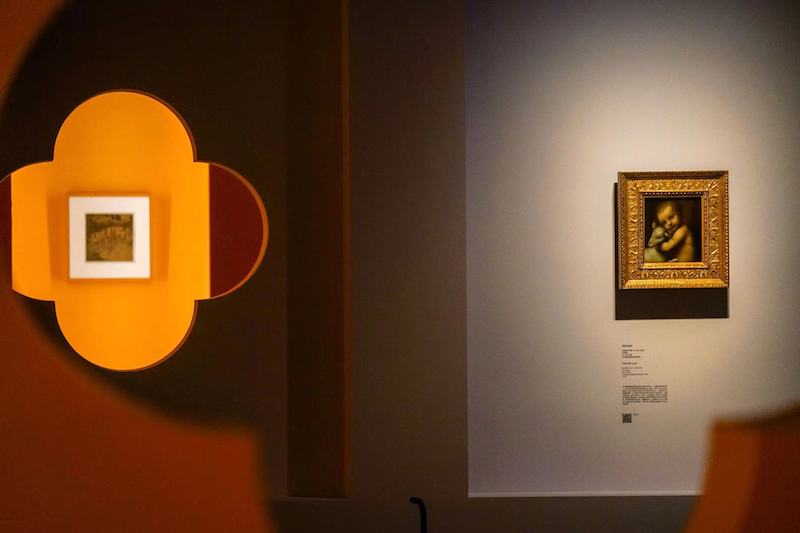
"Conversation with Leonardo da Vinci" exhibition site
Therefore, in the third issue of the "Dialogue with the World" series, we focus on "Dialogue with Leonardo da Vinci". This time, China and Italy each presented 18 art treasures to carry out an art dialogue across time, space and regions. This is the first time we have held a comparative exhibition of Eastern and Western painting art, and it has given everyone a refreshing feeling since the exhibition was launched. Of course, this is our first time trying this format, and I believe many viewers will also raise their own doubts, such as how to start a dialogue and where the dialogue point is. Although we are not perfect enough this time, "Dialogue with Leonardo da Vinci" has set a precedent. This step we have taken is very important. The Shanghai Museum must enhance the cultural confidence of the Chinese people through its own exhibitions. In the future, we There will also be more and more exhibitions of this dialogue type.

Statue of Amenhotep IV, 18th Dynasty (1550-1295 BC), sandstone, National Museum of Egypt
The creation of these two series of brands has left a deep impression on the audience. At the last press conference, we also announced that the fourth exhibition of "Dialogue World" is "Top of the Pyramid-Ancient Egyptian Civilization Exhibition". Focus on ancient Egyptian civilization. In this exhibition, we will also carry out a dialogue between the two ancient civilizations. Of course, the core exhibits will mainly come from the exquisite cultural relics from key Egyptian museums such as the Egyptian National Museum and the Luxor Museum. At the same time, we will also include important cultural relics representing the Chinese civilization. Representative cultural relics and a cultural dialogue between two ancient civilizations. I believe this exhibition will also attract widespread attention.
There will be a "tornado" in the Year of the Dragon in Shanghai
The Paper: In the newly announced exhibition plan for 2024, Shanghai Expo will launch an unprecedented 18 special exhibitions. Among them, there are 14 local exhibitions, and there are many exhibitions involving modern and contemporary art and fashion, which are areas that were rarely explored before the Shanghai Expo. What changes in your exhibition ideas can be reflected?
Chu Xiaobo: The Shanghai Museum has newly opened the East Building this year, and the People’s Square Building continues to be open to the public. These two buildings are the most important cultural fronts. We must make good use of the space. We have been actively planning a long time ago. For related exhibitions in 2024, this year there will be eight special exhibitions in the People’s Square Pavilion and six special exhibitions in the East Pavilion, totaling 14. The “Going Out” cultural relics export exhibition will also be simultaneously promoted, as well as other domestic museums. The total number of exhibitions will definitely exceed twenty, so I say that this year is the Year of the Dragon, and there will be a "tornado" in Shanghai.
Nowadays, museums across the country are very busy, and everyone is working hard, hoping to provide citizens and tourists with rich and colorful cultural products. In fact, exhibitions are the most important means to bring the audience closer to the museum. With everyone working so hard, Shangbo will definitely not be far behind, and we must give full play to our advantages in this aspect. The topics we have planned this year are also very diverse, including the "Why China" series and the "Conversation with the World" series. In addition to ancient Egyptian civilization, the "Dialogue with the World" series also focuses on ancient Persian civilization. We will continue to launch exhibitions focusing on world civilization types and continue this work step by step.
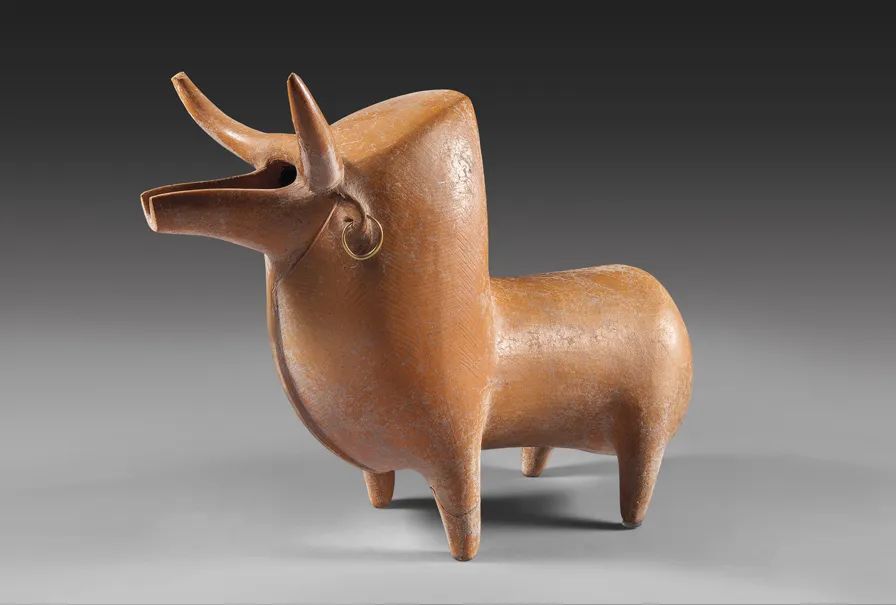
The second phase of the Iron Age of the Tao Laitong Cup (about 1150 BC - 850 BC) was unearthed from the Malik site in Iran and collected by the National Museum of Iran.
In addition to cultural relics exhibitions, there are also painting art exhibitions, such as the ongoing "Conversation with Leonardo da Vinci". In addition to ancient cultural relics and artworks, this year will also focus on modern and contemporary art. Why do we start to pay attention to modern and contemporary art? We found that young people are very interested in modern and contemporary art. Young people are also a very important audience group of the Shanghai Museum. We will also organize some modern and contemporary art exhibitions that young people like. Of course, we have set a very high threshold for the Shanghai Museum’s modern and contemporary art exhibitions, focusing on some internationally renowned masters. For example, this year’s first exhibition of the modern and contemporary art master series “Shi Hui Ancient and Modern” will be held. "Reading: Chen Shiying's Half-Century Jewelry Art Exhibition". In modern and contemporary art exhibitions, we still emphasize the dialogue between ancient and modern art, because any modern and contemporary art master also draws many of their inspirations from traditional culture, so we will present the dialogue between cultural relics and modern and contemporary art in the exhibition.

"Gao Yi Picture Scroll" by Sun Wei of Tang Dynasty (detail), collected by Shanghai Museum
The Paper: Special exhibitions of calligraphy and painting have always been the strength of the Shanghai Expo and have great influence among the public. The Dong Qichang Exhibition and the Wu Hufan Exhibition planned by the Expo in the past few years have been highly praised for their originality and academic depth. What other in-depth planning will be done in calligraphy and painting in the future? For example, have you planned a major exhibition that is of great significance to the study of the history of Chinese calligraphy and painting? For example, taking advantage of the huge exhibition hall of the East Building and the collection of the Shanghai Museum to sort out the "Four Schools of the Yuan Dynasty" and the "Four Monks of the Qing Dynasty", we know that, Shangbo has a huge advantage in the collection of the four Yuan Dynasties, and it also has a huge advantage in the collection of Bada Shanren and Shi Tao. If such a plan forms a global mobilization, it may only be the planning and presentation of Shangbo that makes people the most Looking forward to it, is it possible to continue to form a series of exhibitions of calligraphy and painting?
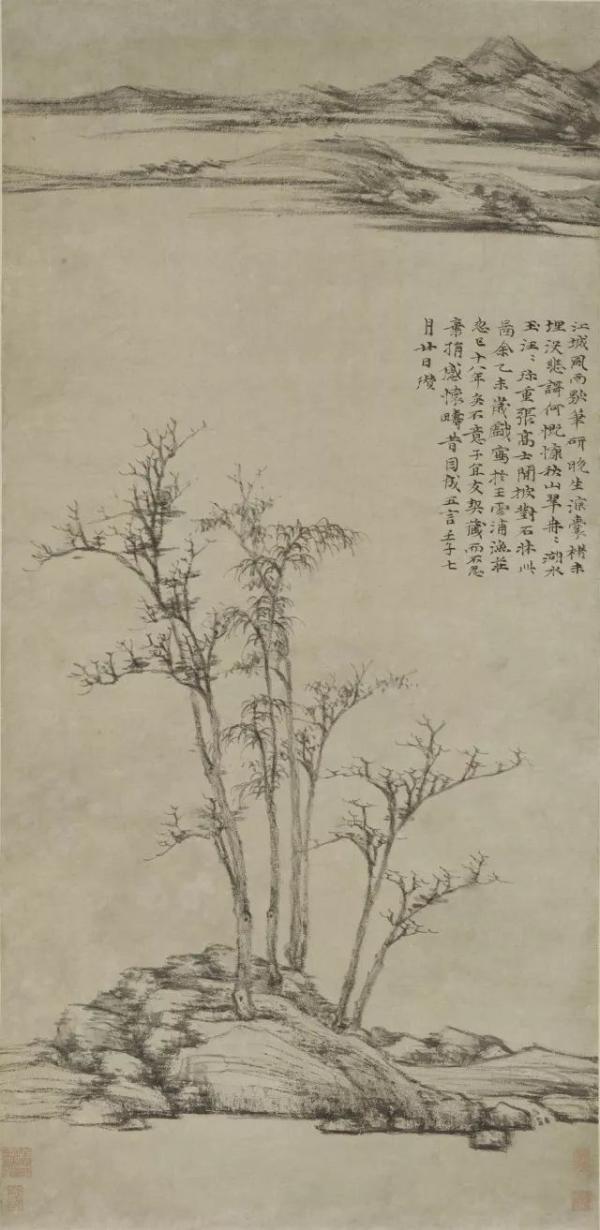
Yuan Dynasty Ni Zan’s landscape paintings collected by Shangbo
Chu Xiaobo: The Shanghai Museum has planned many very successful exhibitions on calligraphy and painting in its exhibition history. It has also previously launched the "Trilogy on the Sea" in the series of special studies on calligraphy and painting, including "Wu Hufan's Calligraphy and Painting Collection Exhibition" and "Paint and Blue Treasure Raft - Dong Qichang". Calligraphy and Painting Art Exhibition" to "Ten Thousand Years of Spring: A Special Exhibition of Shanghai Calligraphy and Painting Art of Past Dynasties" which reflects the history of Chinese calligraphy and painting. For Shanghai Expo, it is still crucial to plan more unique exhibitions related to calligraphy and painting in the future. The Shanghai Museum has a very rich collection of calligraphy and paintings from past dynasties, which is said to hold half of the country in the south of the Yangtze River. Among the more than 1 million cultural relics in the collection, the number of first-class paintings and calligraphy accounts for nearly half of the number of first-class cultural relics in the collection, which also shows the high quality of the collection. Our calligraphy and painting collection system is very complete. So far, among all the museums and art galleries in the world, only the Shanghai Museum can hold permanent exhibitions of Chinese calligraphy and paintings of the past dynasties. Based on such rich collection resources, calligraphy and painting will account for a very large proportion in the exhibition system of the future east hall. In addition to the general history display of calligraphy and painting, there will also be a special exhibition of "Calligraphy and Painting at Sea".

"Snow Bamboo Scroll" by Xu Xi of the Five Dynasties
Cultural relics such as calligraphy and painting are very fragile, and the protection requirements for cultural relics are at the highest level. Generally, an authentic piece of ancient calligraphy and painting needs to be returned to the warehouse for maintenance and dormancy after being displayed for two or three months. The display conditions of the Shanghai Museum's calligraphy and painting cultural relics are relatively good. In addition to the central air-conditioning system in the exhibition hall, there is also a sophisticated independent temperature and humidity control system for calligraphy and painting in the exhibition cabinets, which can ensure a very good constant temperature and humidity environment when the calligraphy and painting cultural relics are on display. Therefore, the exhibits in our painting and calligraphy museum can be displayed for up to six months. The Shanghai Museum’s permanent exhibition on the general history of ancient Chinese calligraphy and painting will have six sets of rotating collections of calligraphy and painting masterpieces, ensuring that each work can get a rest in the next three years after it is exhibited. This is also the advantage of the Shanghai Museum.

"Special Exhibition of Wu Hufan's Calligraphy and Painting Collection" exhibition scene Dong Qichang's "Misty River Mountains"
Special exhibitions of calligraphy and painting are definitely one of the highlights of Shanghai Exhibition. We are also planning future exhibitions of calligraphy and painting. In the future, Shanghai Expo will definitely plan more and more innovative exhibitions in calligraphy and painting, especially those related to calligraphy and painting. A special exhibition of famous artists in the history of Chinese calligraphy and painting related to Jiangnan culture.
Create China’s first normalized “World Civilization Museum”
The Paper: Speaking of “dialogue with the world,” Shanghai Bo has been sparing no effort in cultural exchanges between China and foreign countries. From the perspective of the positioning of the three Shanghai Expo pavilions, whether the People's Square Pavilion aims to become a hub platform for "China to see the world" or the East Pavilion to be a window for "the world to see China", they both emphasize the importance of cultural exchanges. In terms of exhibitions, It also leaves enough space. How did you consider it?
Chu Xiaobo: A more realistic question is, what is the positioning of the People’s Square Pavilion after the opening of the East Pavilion? This is a question we have been thinking about, otherwise it will cause confusion to the audience, so we are also in the process of preparing the new pavilion. When thinking about the future of the People's Square Pavilion, where should it focus? We have sorted out Shanghai Expo’s own resources and the cooperative relationships we have accumulated over the years with internationally renowned cultural relics and art institutions, hoping to build the People’s Square Pavilion into a “world civilization museum” that allows people to see the world in China. Among the more than 6,000 museums across the country, so far there is no venue that can truly display world civilization and art on a regular basis. In Shanghai, a very international city, whether we can take advantage of the Shanghai Museum’s geographical advantage of People’s Square to build the People’s Square Museum into China’s first important place that can regularly display world civilization and art is our question. some thoughts.
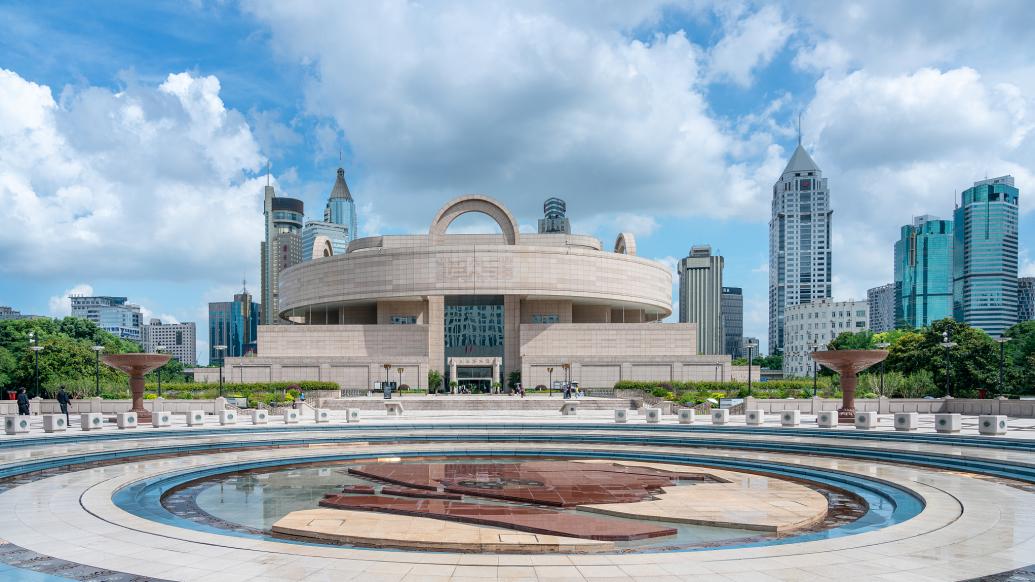
Shanghai Museum People's Square Hall

Spectators waiting to enter the People's Square Pavilion
In the past, we focused on collecting and collecting ancient Chinese cultural relics and art. In the future, we will start a global collection of cultural relics and art based on the more than 10,000 pieces (sets) of relatively systematic foreign cultural relics in the collection. This is in line with the development trend of world-class museums. At present, we have released such a signal to the outside world, and welcome enthusiastic people and patriotic overseas Chinese from all over the world to provide important information to the Shanghai Museum, or to donate some of their collections of foreign cultural relics to the Shanghai Museum.
The Paper: The public knows that the Shanghai Museum of Art has a complete collection of ancient Chinese art and a rich collection, but not much is known about the Shanghai Museum of Art’s collection of foreign cultural relics. How was the foundation of the Shanghai Museum’s collection of more than 10,000 pieces (sets) of foreign cultural relics laid?
Chu Xiaobo: In the past, we did not display many foreign cultural relics collected by Shanghai Expo because the space in the People’s Square Pavilion was limited, and it was impossible to display foreign cultural relics in the permanent exhibition at that time. In the future, we will open a special exhibition hall on "Ceramics and Chinese and Foreign Cultural Exchanges" in the Ceramics Hall of the East Building. Through the medium of ceramics, we will tell how the porcelain invented in China has affected the world. The venue is not very big, but the content is still very exciting. That exhibition hall will Many foreign ceramic cultural relics are displayed.

"Light Reappears: Jingdezhen Porcelain Exhibition in the Mid-15th Century" exhibition scene
The Shanghai Museum has also consciously collected foreign cultural relics in the past and encouraged collectors to donate. However, many of these foreign cultural relics are related to the museum's collection. In the future, we will further expand our collection horizons. Our collection of foreign cultural relics is also relatively systematic. For example, our Silk Road coins can be put into special exhibitions. In the future, we need to present some world civilization-type exhibitions, which will involve more categories of cultural relics, not just limited to a certain type of topic. This is a direction that the Shanghai Museum needs to work hard in the future.
The Paper: Shangbo has a huge collection, and has collected many cultural relics through purchases and donations. Among the collections of Shangbo, what aspects do you think need to be added or adjusted to adapt to Shangbo’s new goals and positioning? In other words, collection planning for the next century? What specific plans do you have for future collections?
Chu Xiaobo: In terms of collection collection, we will definitely pay attention to the collection of modern and contemporary art in the future. This is also a model that is highly recognized by the world's top museums. In fact, the cultural relics we collect from history were considered contemporary works of art at that time. Why can they be passed down to this day? It was extraordinary at the time, so it has survived to this day. Likewise, we also need to collect for the future. Our current focus on modern and contemporary art is also to collect cultural relics for the future Shanghai Museum. We need to expand the scope and hope to establish a new collection system for the future.
The Shanghai Museum is positioned as the world's top ancient Chinese art museum. In fact, when the Shanghai Museum was first established in 1952, when the Central Ministry of Culture and the East China Military Commission approved the establishment and establishment of the Shanghai Museum, Shanghai Museum was positioned as an art museum. More than seventy years have passed, and it is no problem for Shanghai Expo to expand its collection of modern and contemporary art, because it is consistent with its positioning. In the future, the Shanghai Museum will also increase its efforts in this area.


